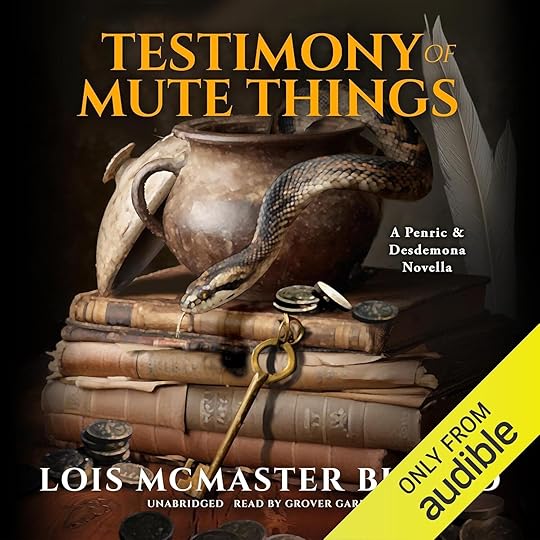Quilted book cover
Dec. 22nd, 2025 04:29 pm( Read more... )
Want to make art for WisCon?
Dec. 21st, 2025 11:49 pmHere is the form: https://drive.google.com/file/d/11nAnzOsm2GlY1B03mJ1hmntB-V1CYRX0/view

#WisCon #WomeninSFF #feministconvention #art #artist #submission
More K-pop Christmas music!
Dec. 20th, 2025 10:45 pmNMIXX released a video containing both a holiday version of "Blue Valentine" (the same tune and lyrics, but with holiday-style backing music) and a rerecording of "Funky Glitter Christmas." Enjoy!
A couple of fun things to watch for:
- At about 1:38, Sullyoon comes out of a doll box, which is fun because people often say Sullyoon looks like a doll.
- At about 1:45, the toys have Lily tied to the floor, a la Gulliver's Travels.
Recent Reading: Solo Dance
Dec. 20th, 2025 09:25 amLast night I wrapped up Solo Dance by Kotomi Li, translated from Japanese by Arthur Morris. This short book is about a young gay Taiwanese woman who struggles with both internal and external homophobia, and eventually moves to Japan looking for understanding.
Queer stories from other countries are always interesting to me and it’s a good reminder that progress has not been even all over the world. Much of the book is pretty depressing, because the protagonist struggled with fitting in even before she realized she was gay, and she has some real struggles. She is battling severe depression for much of the book and at several points, suicidality.
The book is touching in that the protagonist’s struggles feel real and she’s someone who is so close to having positive experience that could change her life for the better, but her luck keeps dropping on the other side each time.
I don’t want to spoil too much about the end, but while I was grateful for the overall tone of the it, it is contrived and not very believable. But I did enjoy the protagonist’s travels leading up to that point. It’s not at all subtle, and it packs a lot more plot into the final handful of chapters than the rest of the book, but it was still sweet to see the protagonist’s perspective shift a little through her engagements with other people.
I’m not sure if it’s the translation or the original prose, but the language is stilted and very emotionally distant. The reader is kept at arm’s length from the protagonist virtually the whole novel, and while we’re often told she’s feeling these intense feelings, I never felt it. It was like reading a clinical report of her feelings, which was disappointing.
This is Li’s first novel, and it reads that way. There’s a lot of heart in it, and I appreciate it for that, but it lacks a lot in technical skill. I would be interested to see more of Li’s future work, when she’s had more time to polish her ability, but I don’t regret taking the time with this one.
Deck the roof with loud repairmen
Dec. 19th, 2025 06:50 pmWhich is perhaps why Belovedest is on the shopping trip without me today. I was too cold and tired to get ready, let alone go out into the cold and dark.
December Check-In
Dec. 18th, 2025 05:37 pm
This month's post will be serving double duty as a community promo. I also run the
Questions? Visit the announcement post at
This month's question involves the holidays. Do you normally do crafting over this period? Is it related to any holidays? Do you do craft gifting? And if so, what do you plan to gift this year?
Christmas music
Dec. 18th, 2025 04:51 pmLast night I discovered that Kiiras had released a Christmas song, called "Kiirasmas." I don't think I'd objectively say it's a good song, but it's still fun to listen to.
A few years ago, I did a K-pop Christmas song Advent calendar. This morning, as I added "Kiirasmas" to my K-pop Christmas playlist, I realized that if I wanted to post the whole playlist one song a day, I'd have had to start back on October 15! ^^
After having to spend 40 minutes listening to the store playing Christmas music while I waited for the pharmacy to fill a prescription. I'd like to say: No matter how Christmas-adjacent some of its lyrics may be, "My Favorite Things" is not a Christmas song. I'm willing to get seriously injured on this hill. However, if it means that I'll hear "The Christmas Song" less often, I'm willing to act like it's a Christmas song.
Demonic Ox now listed for preorder
Dec. 17th, 2025 01:48 pm
Publisher link here:
https://subterraneanpress.com/bujold-...
In addition, the book will be available from Uncle Hugo's Science Fiction Bookstore and Dreamhaven Books & Comics here in Minneapolis, though they likely haven't had time to get it entered on their store websites yet. But in due course.
Ta, L.
posted by Lois McMaster Bujold on December, 17
Okay so more context
Dec. 17th, 2025 09:29 pmDragonslayer Ornstein & Executioner Smough (also known as Oreo and S'mores, Biggie and Smalls, Pikachu and Snorlax, Rodgers and Hammerstein, and any other name the fandom can come up with) are one of the most iconic boss fights in the entire Dark Souls series.
There are much harder ones in later games (and in the DLC), but they're still legendary and still regarded as a Serious boss fight.
They're also a famous mid-game difficulty spike and cause of rage quitting. Conversely, if you can get through O&S, people often say you should have the skills to beat the rest of the base game.
The major issue is that it's a duo boss fight, with one agile speedster (Ornstein) who can zip most of the way across the room in a single move, and also throws lightning, and one heavyweight bruiser (Smough) who is slower but not that slow -- he has a charge attack to close distance fast that hits like a freight train -- and does huge amounts of damage.
So for the first phase of the fight, you have to try to keep track of where they both are simultaneously (not to mention where you are in relation to the room, so you don't back yourself into a corner and get trapped) and constantly manoeuvre to try to be able to get in a hit on one without being hit by the other.
If you kill one of them, the fight goes into a second phase where the surviving one absorbs some of their powers (so if it's Smough, he gets lightning, while if it's Ornstein he gets sized up and picks up part of Smough's moveset) and also restarts with a full and vastly increased health bar. Though there is a general consensus that the second phase is more manageable than the first phase simply because you're not having to fight two bosses at the same time.
Illustrative example of someone doing the fight:
(You can summon an NPC or other human players to try to help you, but the bosses get extra health to compensate and it's still tough. And also I have been having enormous fun trying to beat all the bosses without summons so far, and am averse to the extra complications and unpredictability of having more people -- human or NPC -- in the mix while I try to figure out a fight. Though I've also had enormous fun being a summons for other people on boss fights, so zero disrespect to people summoning*, it's an excellent game mechanic.)
As I may have mentioned once or twice, my brain has huge difficulty tracking multiple moving objects (which is why I can't drive or cycle on the road) and I have the reaction speed of a slime mould.
So yeah. I knew O&S are the big mid-game stopper and I was very aware that this could potentially be the point where I hit a wall and the game became flatly impossible for me. Or at least where I'd have to summon to get through it.
And that did not happen. I solo-ed O&S.
It took multiple sessions over multiple days before I mastered it, but that's standard for me on DS boss fights. And I had SO MUCH FUN. It's SUCH A COOL FIGHT.
I did a thing that was a real achievement for me and I am very proud, and especially given the shitshow this year has been, I'll take it.
{*Necessary disclaimer only because Dark Souls fandom has historically had a section who are toxic as fuck and would like you to know that you didn't really beat the game if you summoned or used magic or whatthefuckever else they disapprove of.}
The price of postage
Dec. 17th, 2025 12:13 pmWhen I order things from Japan and Korea, my goal for managing postage costs is to have the postage cost less than the item, which I'm usually able to manage. Recently one of my friends sent me a package from within the US, for which the postage cost 3x the cost of the item!
Recent Reading: The Tomb of Dragons
Dec. 16th, 2025 08:58 pmTime and circumstance conspired to keep me from reviewing the second book in the Cemeteries of Amalo book, The Grief of Stones, but today I finished the third book, Tomb of the Dragons and I do have time to review this third and final book in the trilogy.
This is NOT a spoiler-free review.
Tomb of the Dragons retains much of what I loved about the first two books, including Thara’s character and his investigations into the underbelly of Amalo, with a healthy helping of Ethuveraz politics.
Thara is having to adjust to the events at the end of the last book, and here, I feel, is where we truly see how important his calling is to him—how he handles losing it. It gives some good perspective to why he is so dogged in pursuing his work goals—his calling really is his sense of purpose, his life. Watching Thara grapple with this change and its indefinite consequences was fascinating.
However, it also retains in greater measure some of the things that I didn’t love about the earlier books, including Addison’s obsession with minutiae. I can only read about the characters traveling on this or that tram line so many times before my eyes start skipping lines to the things that really matter. This would bother me less if it didn’t feel like it came at the expense of more important things.
( Read more... )Racing toward the end of the year...
Dec. 16th, 2025 09:29 pm- Queen of Swords Press has released the new Astreiant omnibus! The Complete Astreiant by Melissa Scott and Lisa A. Barnett includes all 6 novels and is available in the various ebook platforms. However. Amazon is absolutely fleecing us on this, taking 65% of cover, so please, please, buy it direct from us or Smashwords/D2D or Kobo or even B&N or GooglePlay instead. I need to see if Weightless is interested too. At any rate, the Astreiant Series is eligible for the Best Series Hugo this year! Please keep it in mind.
- I'm trying to wrap up the first third of my Data Analytics certification, with a final this week.
- I'm doing Queen of Swords Press's 34th event for 2025 this Saturday - stop by AudreyRose Vintage in Minneapolis on 12/20 12-4PM for fun shopping with multiple vendors of various things!
- I'm working on edits for Joyce Chng's fab collection, Sailing the Golden Chersonese, which we're releasing early next year.
- I need to complete a new grant proposal in the next two weeks.
- I have written several thousand works of new fiction, including working on the next werewolf novel in the last few week, thanks to writing sprints.
- I have come to recognize that I will not be landing in an IT gig any time soon, if ever, due to needing remote work, my age and the state of the job market, so I'm enrolling in the State of MN CLIMB Program and have gotten myself a small biz mentor through Hennepin County Elevate and I'm doubling down on publishing.
- New editing biz is open! Got a manuscript that wants some love or need some publishing coaching or know someone who does? Send them my way!
Testimony of Mute Things now up on Audible
Dec. 16th, 2025 08:22 amww.amazon.com/Testimony-Mute-Things-D...

Happy listening!
Ta, L.
posted by Lois McMaster Bujold on December, 16
So
Dec. 16th, 2025 11:19 amFor anyone who would like context -- Symbalily meets and gets to grips with O&S, from the timestamp: https://youtu.be/3TKhwbveyVE?si=14uuwYlVq1ywUwRk&t=5681



